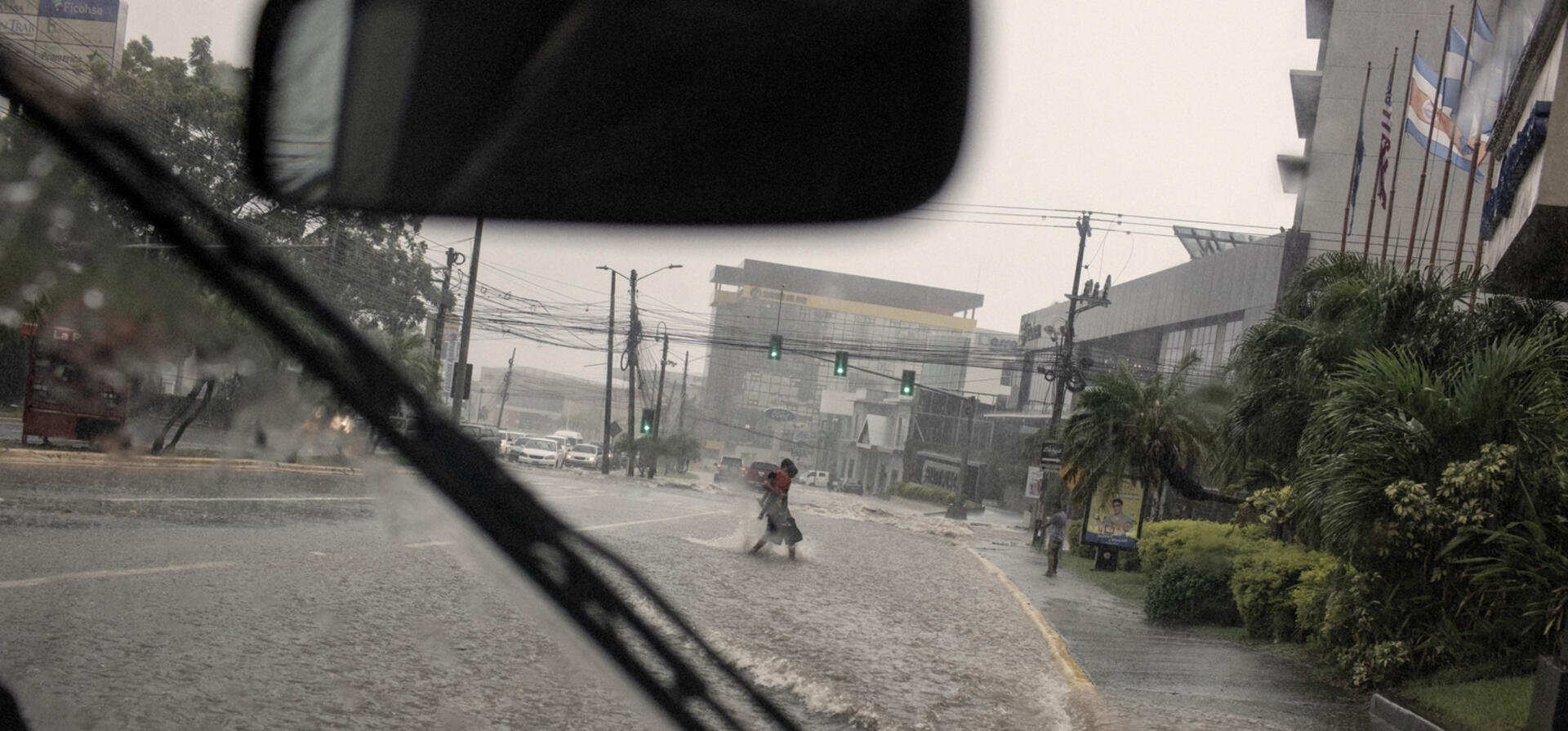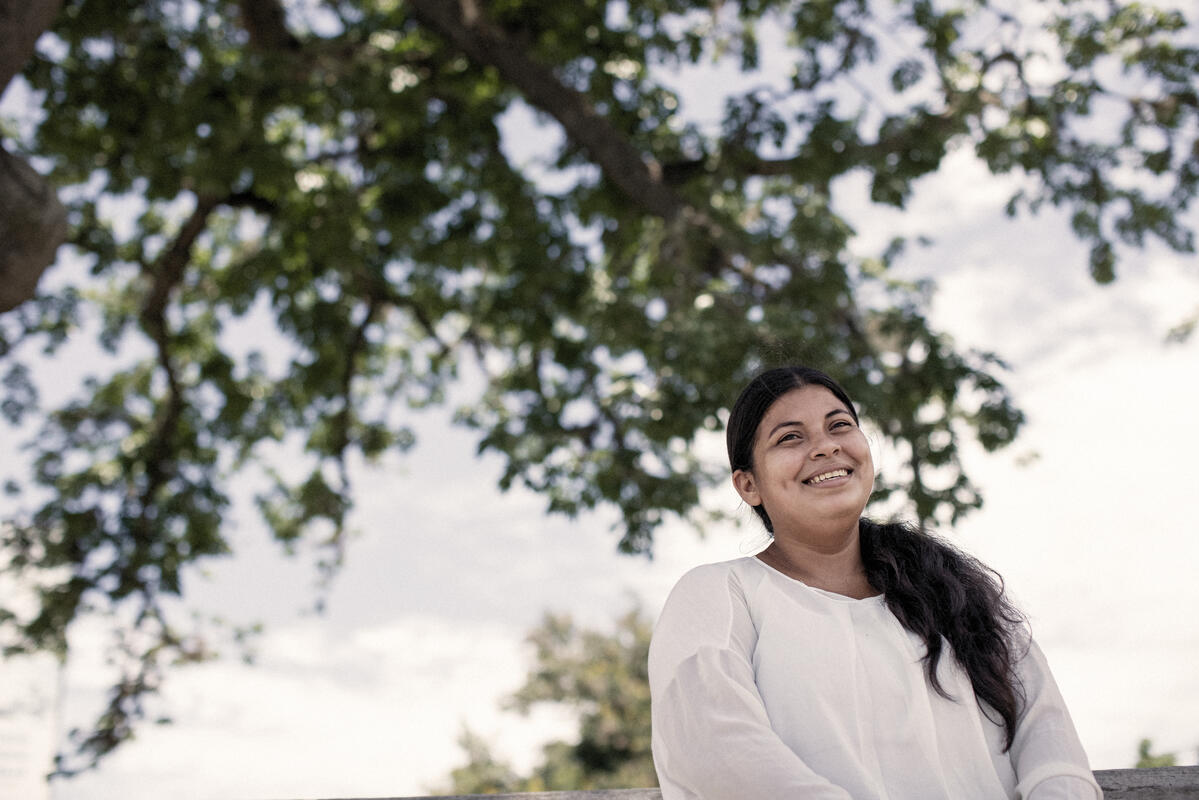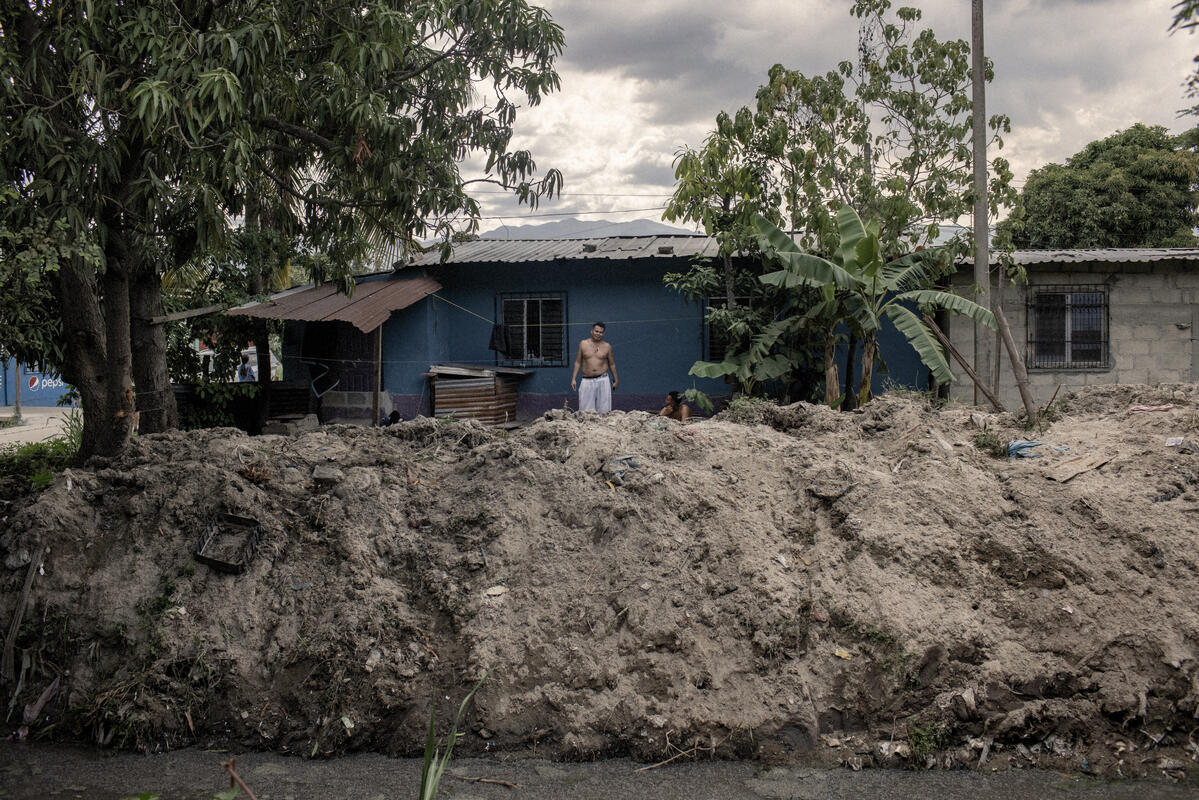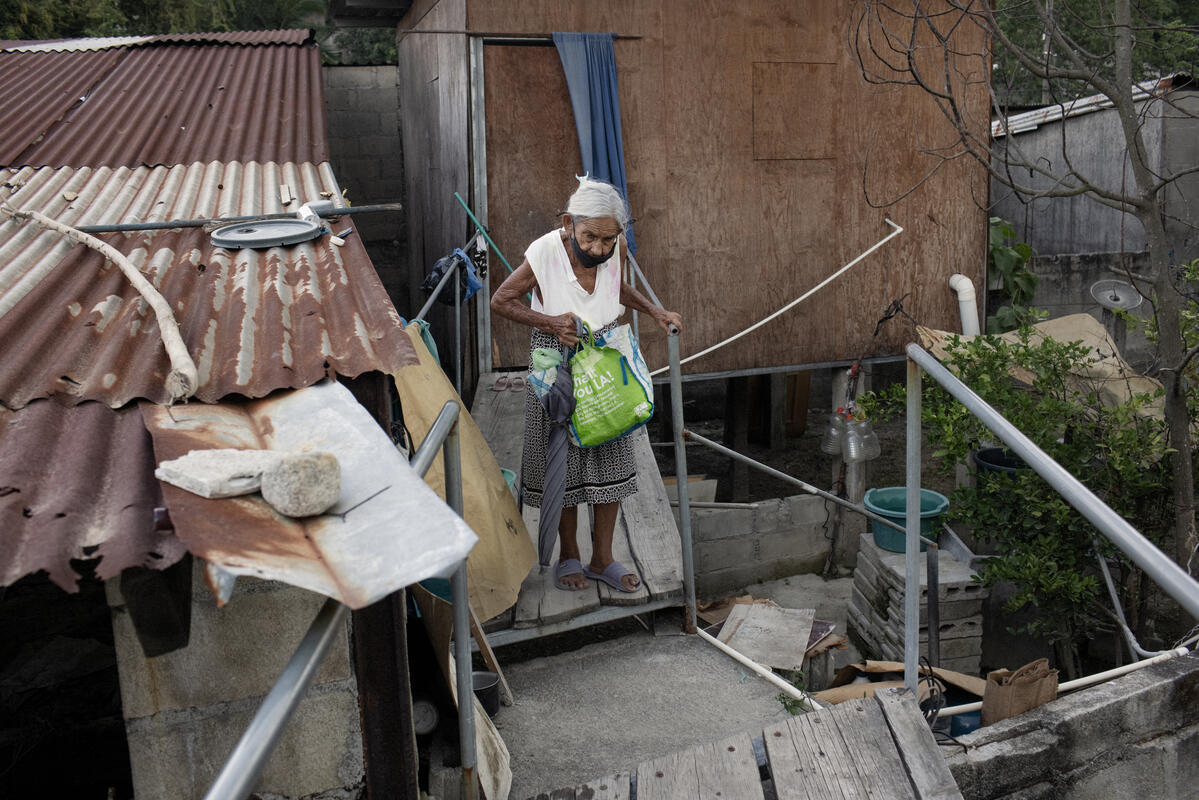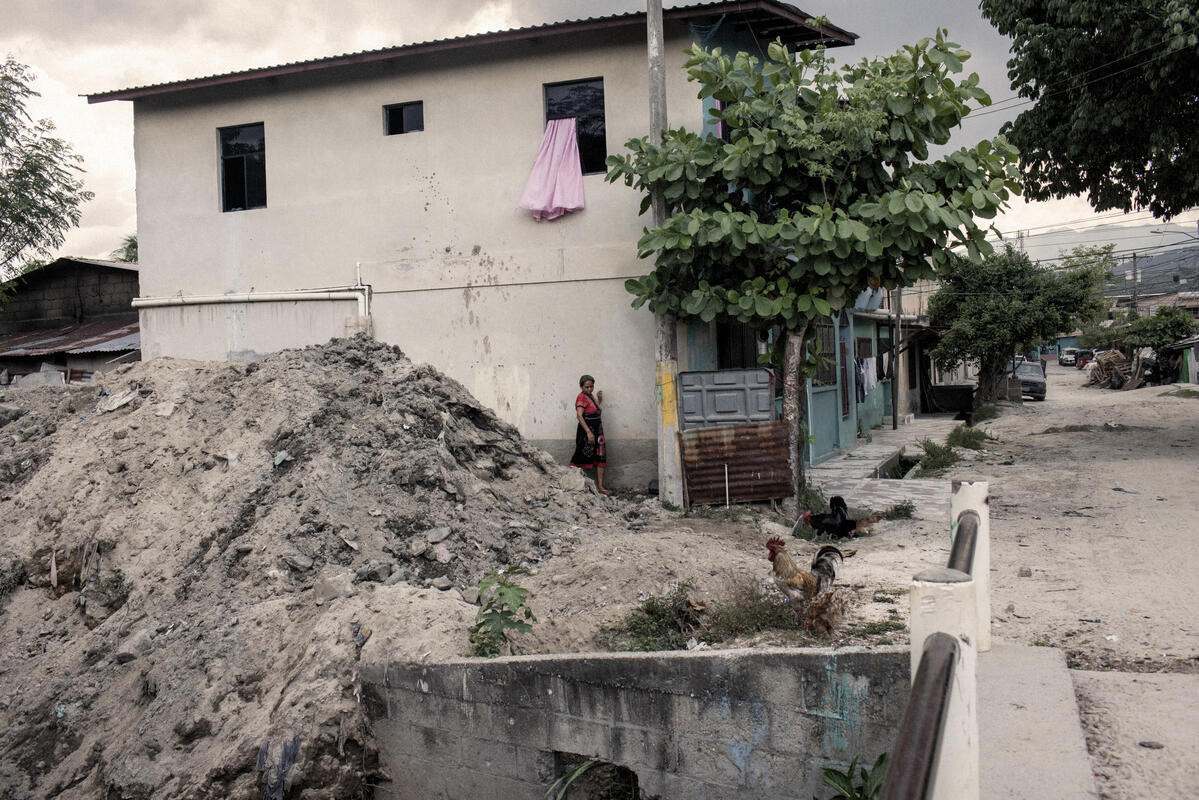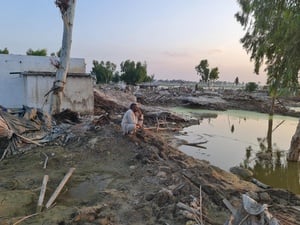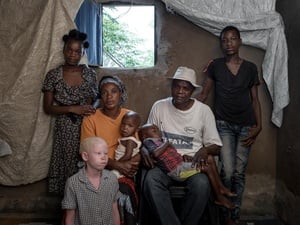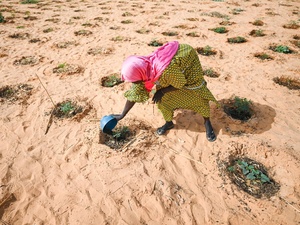In Honduras, climate change is one more factor sparking displacement
Two months after two deadly hurricanes in quick succession flooded her neighbourhood, Elsa* finally screwed up the courage to check on the state of her home. She had to wade through neck-high waters just to reach it.
What she saw was devastating: The neighbourhood is a high-crime area on the outskirts of San Pedro Sula, Honduras, where ruthless street gangs hold sway. It had been blanketed in such a thick layer of mud that the corrugated tin roofs were the only visible part of many of the homes.
Elsa and her family fled the area as Hurricane Iota, a Category Four storm with winds reaching 155 m.p.h., struck on 18 November, 2020, dumping up to 63 centimetres of rain on ground already saturated by Hurricane Eta, another Category Four storm that had pummelled the same areas in Honduras, Guatemala and Nicaragua less than two weeks earlier. They marked a tragic end to a record-breaking hurricane season in the Atlantic, with 30 named storms.
“I’d never experienced any storms like these.”
In the midst of the downpour that came with Iota, the waters of a nearby river spilled over, inundating Elsa’s neighbourhood and blanketing many houses in sticky, debris-strewn mud, while it swept others away.
The family escaped to a shelter on higher ground, with what little clothing they managed to grab on their way out. But just hours later, surging waters spilled into that shelter, too, forcing the family to flee once again.
According to official figures, more than four million people were affected by Hurricanes Eta and Iota in Honduras alone. Elsa and her family were among the lucky ones. They survived both storms and were able to stay for months in a shelter as neighbours chipped in to rent a bulldozer to clear the standing water and mud that blanketed their community.
“I cried when I saw so much destruction because we’d never seen anything like it,” said Elsa, whose modest home was among those rendered uninhabitable by the mud. “I’d never experienced any storms or hurricanes like these.”
Unable to return home, Elsa, her five-year-old daughter, mother and sisters and their children have taken refuge with family and friends in another area of San Pedro Sula. There, on higher ground they feel better prepared to face a future storm, but now face other potentially deadly risks: a criminal gang that terrorizes local residents, demanding extorsion payments, forcing young people into joining them and ruthlessly enforcing their own rules.
But going back to their old neighbourhood, also controlled by a gang, is not an option.
“Gangs took advantage of the extreme vulnerability of victims of the hurricanes to tighten their control, imposing restrictions on movements,” said Andrés Celis, UNHCR’s representative for Honduras. “For many who were displaced by the storms, going back could be dangerous.”
Hurricanes have always been a fact of life in San Pedro Sula and throughout Honduras’ low-lying Caribbean coast. But the devastating nature of last year’s storms and the fact that they came back-to-back indicate new, more ferocious weather patterns as a result of climate change. Across Honduras, communities already stretched to the brink by widespread gang violence are facing the prospect of dealing with disaster upon disaster with little time or resources to recover in between.
Some 247,000 Hondurans have been internally displaced, and another 183,000 have sought international protection outside the country. While it is impossible to determine exactly how big a part extreme weather events like Hurricanes Eta and Iota played in people’s decisions to flee, it is clear that climate change has become yet another factor forcing vulnerable Hondurans to leave their homes and communities.
Climate-related changes in the weather are also wreaking havoc across other parts of Central America, displacing subsistence farmers and others throughout the region’s so-called “dry corridor,” a strip of territory that stretches across Costa Rica, Nicaragua, Honduras, El Salvador and Guatemala, as crops fail season after season. And this is but the beginning.
In its latest report, the United Nations climate panel, the IPCC, said with “high confidence” that the future impacts of a warming climate on Central America are likely to include “some coastal areas affected by sea level rise, weather and climatic variability and extremes.”
“The house flooded, the foundations were swept away, and it collapsed.”
Denis, a 44-year-old construction worker, saw his life fall apart amid the devastating one-two punch of Hurricanes Eta and Iota.
He, his wife and their four children lived in a cinderblock home on the outskirts of San Pedro Sula. Hurricane Eta buffeted the house, but it survived, largely intact. Less than two weeks later, though, it succumbed to Iota, the most powerful storm ever to strike Honduras.
“When the water rose, we took refuge in a church. When we came back, there was nothing there,” Denis recalled. “The house flooded, the foundations were swept away, and it collapsed.”
Now, the neighbourhood has been taken over by a gang, or mara, and Denis’ wife left him for one of the gang’s members.
“I went to ask her to come back to the kids, and (her new partner) told me to go or he’d kill me,” Denis said. “I was no longer safe in any part of Honduras and I had to leave.”
He sent his two middle children to live with his adult daughter in a nearby village, and in April, Denis set off with his youngest son, age four, to seek asylum in the United States.
In northeast Mexico they crossed the Rio Grande to Texas in a raft and were detained by the US Border Patrol. The two were subsequently expelled to the Mexican border city of Tijuana, where they were living in a migrant shelter in the city. Denis still hoped to seek asylum in the US, where he has a sister and aunt.
“Our best option is to join our family in the US,” he said, adding, “We can’t go home.”
* Name has been changed for protection reasons.


